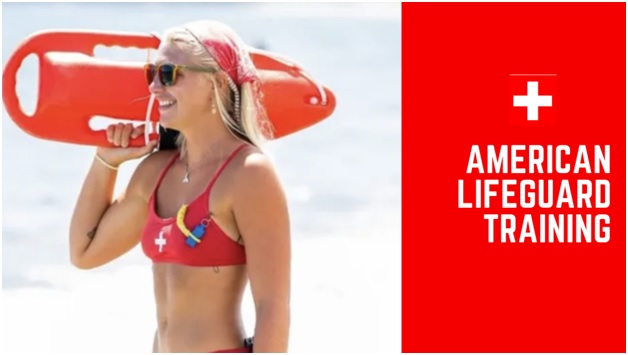Lifeguarding is a noble profession that requires a high level of physical and mental fitness, discipline, and responsibility. Lifeguards play a vital role in ensuring the safety of individuals at beaches, swimming pools, water parks, and other aquatic environments.


They are responsible for preventing drowning and other water-related accidents by enforcing safety rules, responding to emergencies, and performing rescues. In this article, we will explore the importance of lifeguarding as a profession and the steps required to become a certified lifeguard.
The Importance of Lifeguarding
Lifeguarding is a critical profession that saves lives and prevents injuries. Drowning is one of the leading causes of accidental deaths worldwide, with an estimated 236,000 deaths annually. In the US, drowning is the third leading cause of accidental deaths, with an average of ten people dying from drowning every day. These statistics highlight the importance of having lifeguards in aquatic environments to prevent drowning and other water-related accidents.
In addition to preventing accidents, lifeguards also play an important role in educating the public about water safety. They teach individuals how to swim, how to use safety equipment such as life jackets and flotation devices, and how to recognize and respond to emergencies.
Lifeguard training
Lifeguard training is a rigorous program that teaches individuals the skills and knowledge needed to become a certified lifeguards. The training includes both theoretical and practical components, covering topics such as water safety, rescue techniques, first aid, and CPR. The training also includes physical fitness tests, such as swimming and endurance tests, to ensure that individuals are physically capable of performing rescues.
Lifeguard training programs are offered by various organizations, including the American Lifeguard Association (ALA). These programs usually last several weeks and include both classroom and hands-on instruction. During the classroom portion, trainees learn about water safety, the physiology of drowning, and how to recognize and prevent emergencies.
The hands-on portion typically takes place in a pool, where trainees practice rescue techniques, CPR, and first aid. The practical part also includes swimming and endurance tests to ensure that trainees have the physical ability to perform rescues.
Lifeguard certification
After completing the lifeguard training program, individuals can obtain lifeguard certification by passing a certification exam. The exam typically includes written and practical components, testing individuals’ knowledge and skills in water safety, rescue techniques, first aid, and CPR. The certification is valid for a specific period, typically two years, after which individuals must renew their certification by completing a refresher course and passing a recertification exam.
Lifeguard certification is essential for individuals who want to work as professional lifeguards. Certification is also required for some summer jobs, such as working as a camp counsellor or waterfront staff. In addition to opening up employment opportunities, lifeguard certification is also a valuable life skill that can be used to help others in emergency situations.
Lifeguard classes
Lifeguard classes are available for individuals who want to become certified lifeguards, as well as for lifeguards who need to renew their certification. The classes are typically offered in person, but some organizations also offer online courses.
The classes cover the same topics as the lifeguard training program, including water safety, rescue techniques, first aid, and CPR. The classes also include practical components, such as swimming and endurance tests, to ensure that individuals are physically capable of performing rescues.
In addition to basic lifeguard classes, there are also specialized classes that individuals can take to further their lifeguarding skills. For example, individuals can take classes in waterfront lifeguarding, which teaches the skills needed to work as a lifeguard at lakes, rivers, and other natural bodies of water.
Other specialized classes include pool operator certification, which teaches individuals how to maintain and operate a swimming pool, and aquatic exercise instructor certification, which teaches individuals how to lead aquatic exercise classes.
Lifeguarding as a Career
Lifeguarding can be a rewarding career that allows individuals to make a difference in their community and ensure the safety of others. Lifeguards can work in a variety of aquatic environments, including public beaches, community pools, water parks, and summer camps. They can also work as instructors, teaching others how to swim, perform CPR, and respond to emergencies.
The American Lifeguard Association
The American Lifeguard Association (ALA) is a non-profit organization that provides lifeguard training and certification programs. The ALA offers a variety of courses, including lifeguard training, CPR and first aid, waterfront lifeguarding, and pool operator certification. The ALA also offers instructor training courses, which teach individuals how to teach lifeguarding courses and certify others.
The ALA is recognized by the United States Lifesaving Association (USLA) and the International Lifesaving Federation (ILS), making its certification programs internationally recognized. The ALA is committed to promoting water safety and ensuring that individuals are trained to respond to emergencies and prevent drowning.
Conclusion
Lifeguarding is a critical profession that saves lives and ensures the safety of individuals in aquatic environments. Becoming a certified lifeguard requires rigorous training and certification, but it can lead to a rewarding career and the ability to help others in emergency situations.
The American Lifeguard Association is a non-profit organization that provides lifeguard training and certification programs that are recognized nationally and internationally. By becoming a certified lifeguard, individuals can make a difference in their community and help prevent drowning and other water-related accidents.
















